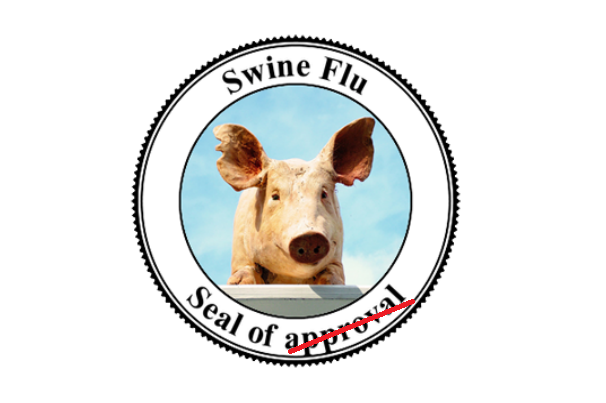When the sixth person died, health authorities appeared in the media and indubitably informed the public that there is no epidemic
In Armenia, the start of the new year, as a rule, is symbolized by the lack of news and the outbreak of various illnesses.
Traditionally, after a long winter break, classes in schools and preschools are postponed by an additional week (the first to know this are Facebook users, who read the Armenian Minister of Education and Science’s regular status updates).
Then it’s time for the information on acute respiratory infections, of which news stories comprise a significant portion. This year, the situation is perhaps more serious, since mixed in with the usual cold is the worrying swine flu.
News of the swine flu began to spread sweepingly and in geometric progression. “Is mine a regular or swine flu?” became a common question, which was quickly met with answers in the news media.
“How to tell a regular flu from the swine flu?” and “How to protect yourself from swine flu”: stories with headlines similar to these appeared [AM] in the media in the beginning of the year.
There were attempts to present swine flu humorously (mainly joking about ham, the main dish at every New Year’s dinner). “The Monkey’s ‘Swinishness’” [since 2016 is the year of the monkey]: The news outlet 7 Or made such shallow and meaningless parallels. Examples of conspiracy theories also found their way into the news. Swine flu was represented as an imported weapon, aimed at hampering with Armenia’s health.
There was little to write, and the flu inspired anxiety.
The situation became entangled when the word “epidemic” circulated in the media. “Classes Postponed Because of Swine Flu Epidemic” [AM], reported Civilnet on Jan. 7.
“Epidemiological Situation Not Tense in Artsakh” [AM] was the obscure headline Aysor published.
“Turkey’s health ministry not worried about deaths resulting from swine flu,” wrote Yerkir, turning the issue into a hot regional topic.
“10 Pregnant Women Hospitalized Because of Swine Flu Virus” [AM], wrote Aravot.
“Georgia At Threshold of Swine Flu Epidemic” [AM], declared News.am.
And everyone immediately took an interest: what about Armenia?… especially since news of hospitalization and deaths became known. When the sixth person died [AM], health authorities appeared in the media and indubitably informed the public that there is no epidemic.
Armenia’s chief infectious diseases specialist called a press conference and asked news outlets not to use that word. “I want to ask journalists not to cause panic… panic and high alert are very close to each other; we have to [be able to] distinguish them,” he said.
Then Armenia’s Deputy Minister of Healthcare declared that “there’s no danger of an outbreak of swine flu in Armenia” — which Armenpress [AM] rushed to quote.
According to an interesting bit of logic, if you don’t write “panic,” there won’t be panic. And if you write “epidemic,” an epidemic will ensue. And Armenia’s media industry acted as was communicated to it. It refrained from words of panic, but since the number of infected people and patients was increasing, there was no shortage of questions.
Some news outlets simply reported that there’s no epidemic. Many headlines didn’t even note that this was the opinion of those in charge, but presented as the ultimate truth [AM]. It’s probably worth at such responsible moments to state something not on your own behalf, but on behalf of who made the claim. For instance, mention the source of the claim [AM].
Other news outlets continued to raise questions. Approximately like so: “There’s no epidemic, but…” “There’s no epidemic, but the number of patients is increasing,” reported Civilnet.
“The Ministry of Healthcare declares the lack of a flu epidemic, but it doesn’t offer data on the number of patients,” Arka news agency posed the question.
“There’s no epidemic of acute respiratory diseases in the country,” claimed [AM] Armenia TV — with certainty and no “buts”.
“Six People in Armenia Died of Swine Flu, But Deputy Minister Claims No Epidemic”: This Epress.am headline perhaps reflected best the concerns in Armenia, which escalated after calls for vigilance.
Asked whether the virus is being brought from outside, Armenia’s chief infectious diseases specialist said something philosophical. “In Armenia, no airborne infection is borne from the earth or a tree or mound; it is always brought here from either Russia or Iran or other countries.”
The newsfeed informing us of the swine flu is confusing for several reasons. First, the numbers are rapidly changing and second, paramount is the question whether the numbers reflect the reality.
We know that infections that are of unknown origin and have severe consequences evoke horror (and panic) when they get strong validation through numbers and percentages. The many illnesses and deaths testify to the danger, while the flu’s Latin name, H1N1, cuts like a sharp knife.
Actually, state health agencies should be thankful to the media for ‘panic-strikingly’ raising the topic — because it’s when he is alarmed that a person tries to gather information and take care of himself. And when you think of yourself, everyone wins.
As a continuation of the portrait of human health, read this news story [AM], the source for which has become a newfangled but highly evident and worthy of respect expert, the “sleep specialist,” who encourages the public to sleep and wake up at fixed times.
Nune Hakhverdyan







